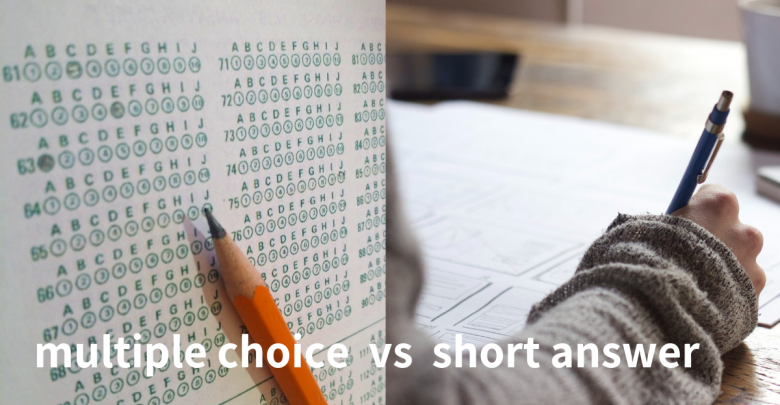 Helen Zhang
Helen ZhangMultiple Choice:
If you’re the type of student who’s going into an exam completely unprepared because you were busy watching Game of Thrones, spending afternoons at Dewey’s, or maybe you just forgot you had a test, multiple choice is the better option. They call it “multiple guess” for a reason. Even if you have a good grasp of the material, multiple choice is what we pray for as students. With written response, it can be difficult to know what professors are looking for, and even if you understand what they’re asking, your wording can determine your luck. With multiple choice, you know the answer is there, and often you can eliminate an obviously incorrect answer or two.
When you have 50 minutes to write a midterm worth 40 per cent of your grade, you have no time to pull out an eraser, let alone spend time writing neatly. It’s a mad dash to finish, and the closest I’m ever going to get to running a track event. When it’s written response and you hand in an exam written in chicken scratch, you can guarantee you’ll get the exam back with a few red question marks on the page.
Don’t even get me started on the bane of every university student’s existence: question inception. It’s the moment you realize that the “only two written response questions” your professor referred to includes parts 1a, 1b, 1c, 1d, 1e, and so on. With multiple choice you’re likely getting more questions, which means each wrong answer is worth less. If you do get stuck on one, moving on and coming back later really isn’t a big deal because you can guess and know that it won’t make or break the exam. Multiple choice is the easier, better exam format.
— Nik Bhargava
Short Answer:
On the surface, multiple choice might seem like the better testing method. You know that the correct answer is there somewhere, and if you take a random guess, you have a decent chance of getting it right; but the downside of those increased odds is that it’s an all-or-nothing deal. You pick the right answer and get the point, or you get nothing. On the other hand, if it’s a short answer test, a clever student can scavenge for partial marks. If you have no idea what classical conditioning is but “Ivan Pavlov” rings a bell, you can at least write that down and pray that your professor takes pity on you. But with multiple choice, no amount of desperate scribbling in the margins will help you pass that midterm.
Another nice thing about short answer tests is that there are usually fewer questions. While this does put more weight on each individual question, it also means that you can slow down a bit and focus on one idea at a time. That’s certainly better than flying through pages and pages of multiple choice questions, hand cramping as you race to fill in those tiny bubbles before your time is up. And if you accidentally skip a row on that bubble sheet? It’s all over.
Lastly, multiple choice exams can be far more agonizing because it’s so easy to overthink them. With a short answer test, you’re usually able to figure out whether you know the answer fairly quickly, and then decide how to proceed. With multiple choice, students often waste precious exam time ruminating over whether the answer they picked was the right one or not. Was it the one you picked, or the slightly similar answer beside it? Or maybe you’re pretty sure of what the answer is, but that’s the fourth B you’ve circled in a row, and now you’re second guessing this answer and the three you picked beforehand. And nothing drives me up the wall more than questions with options like “A”, “B”, “A and B” “neither A nor B”. My eye twitches when I so much as think about them.
With the possibility for partial marks, fewer questions to contend with, and a lot less overanalyzing, short answer is clearly the superior testing format.
— Christine McManus




